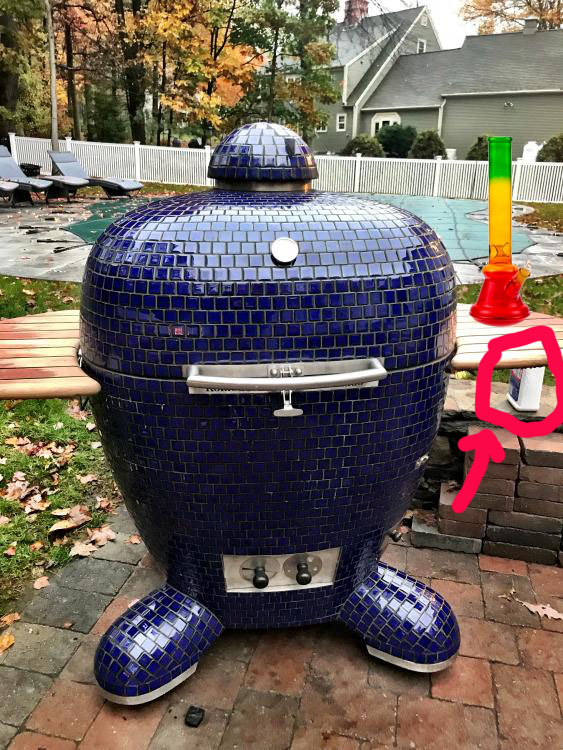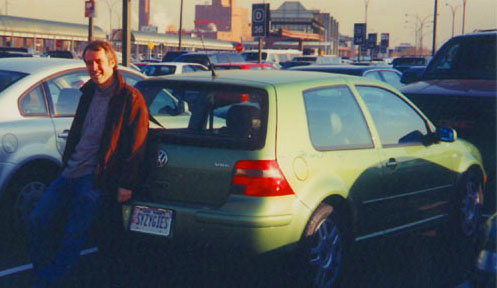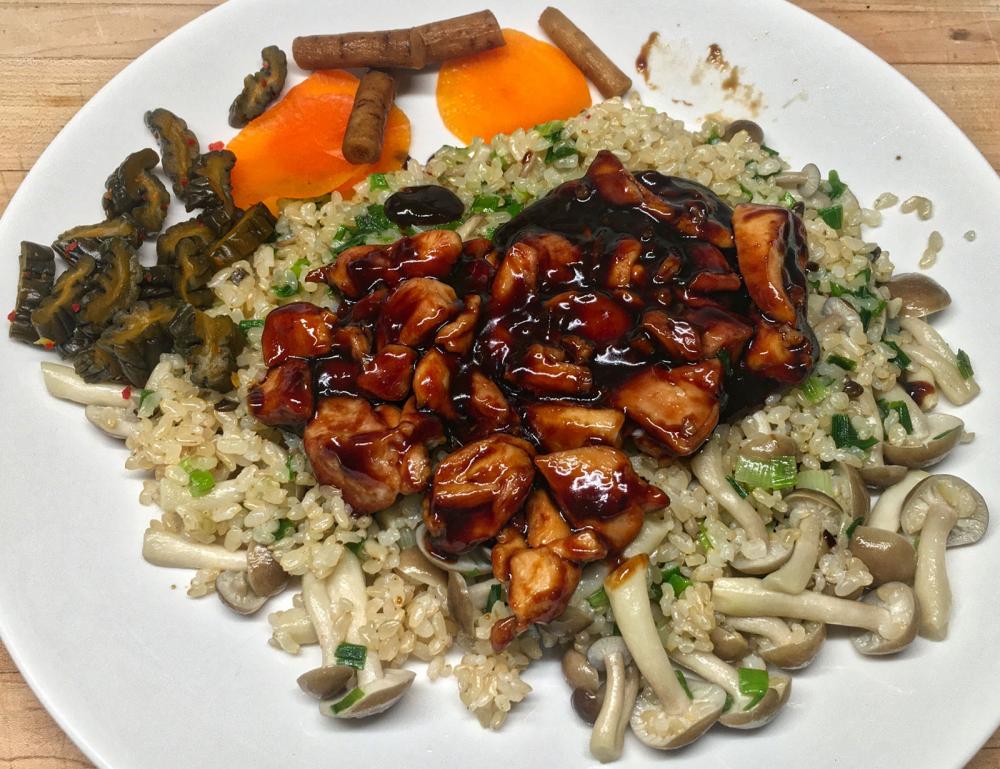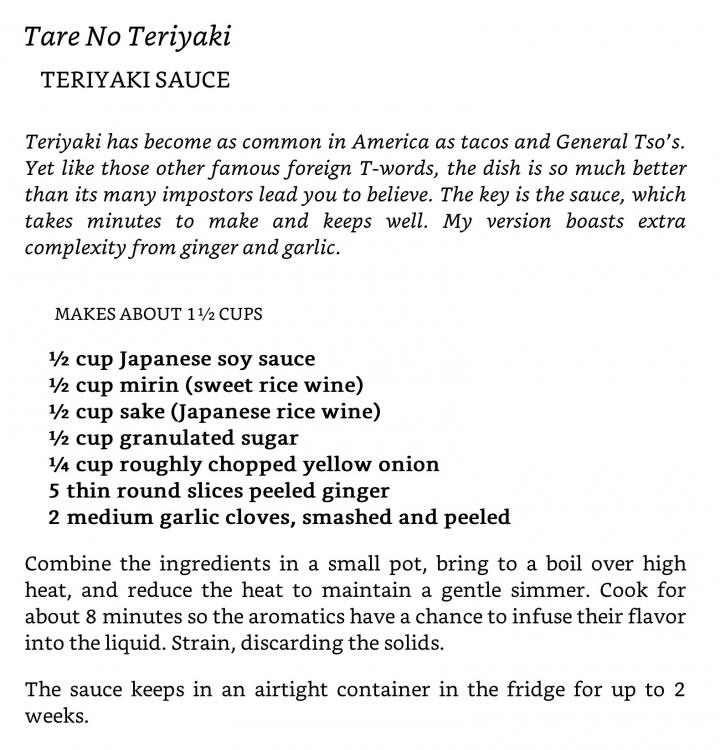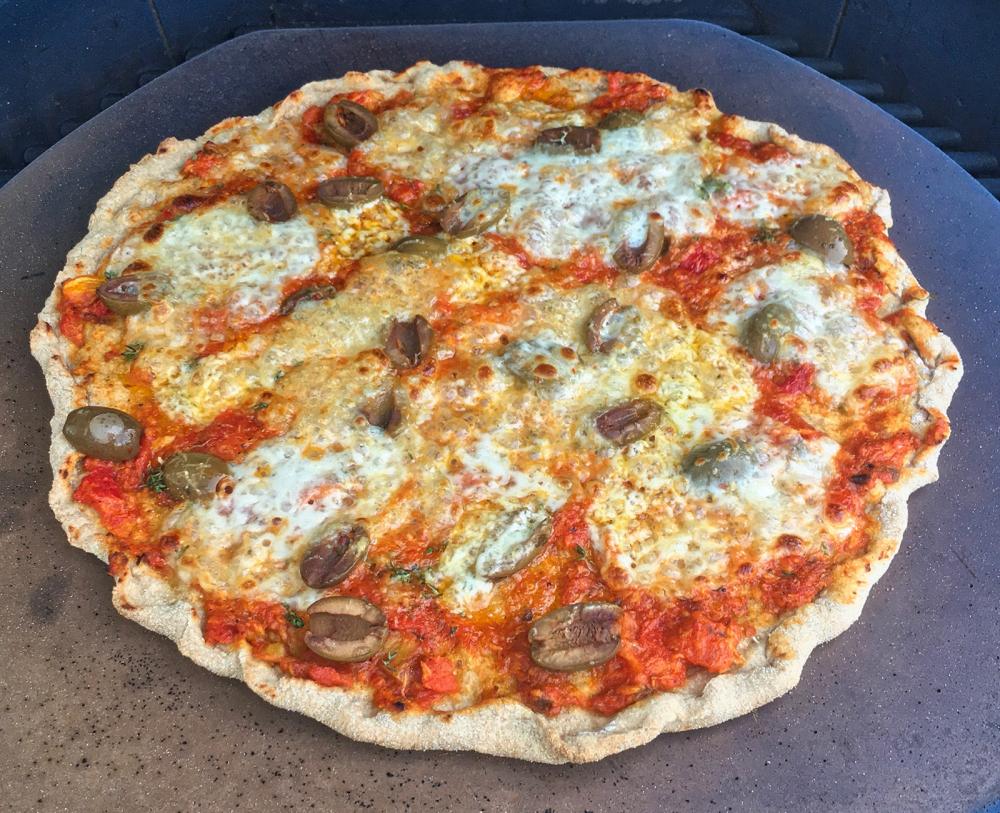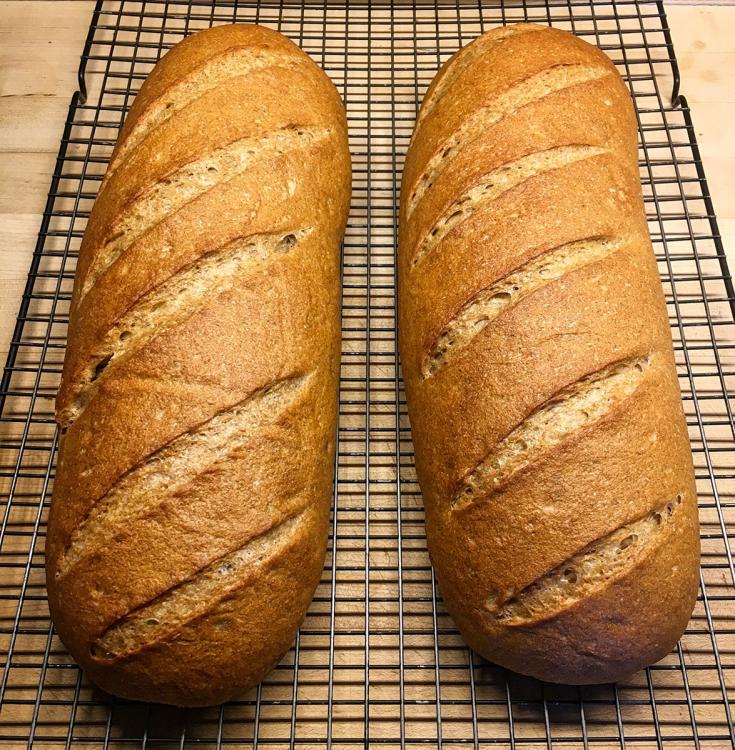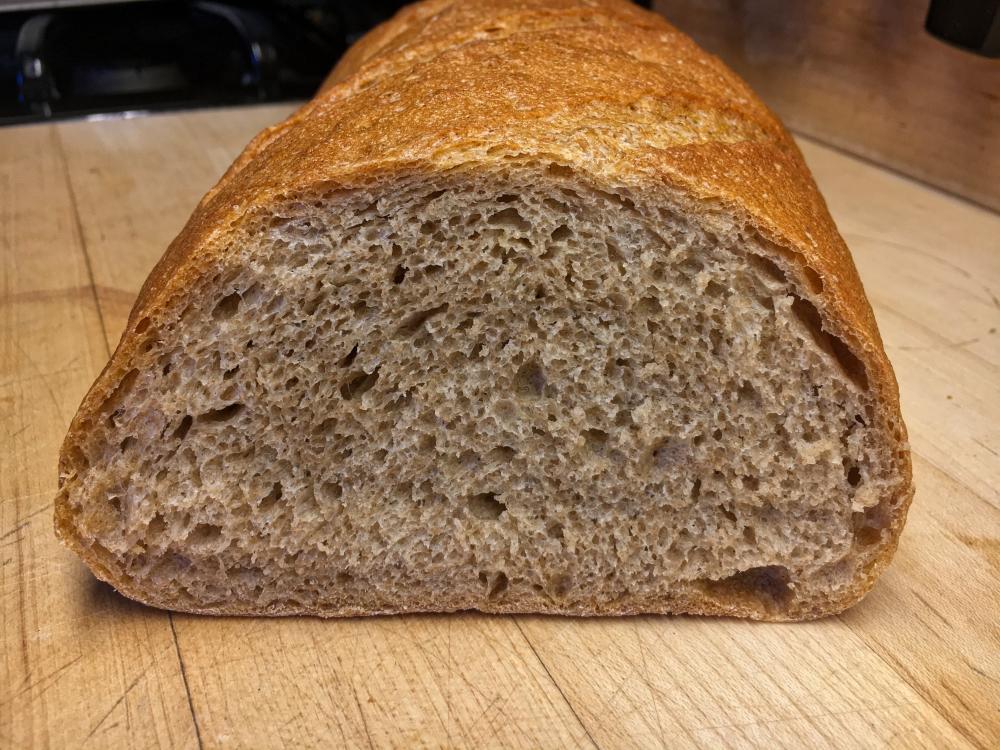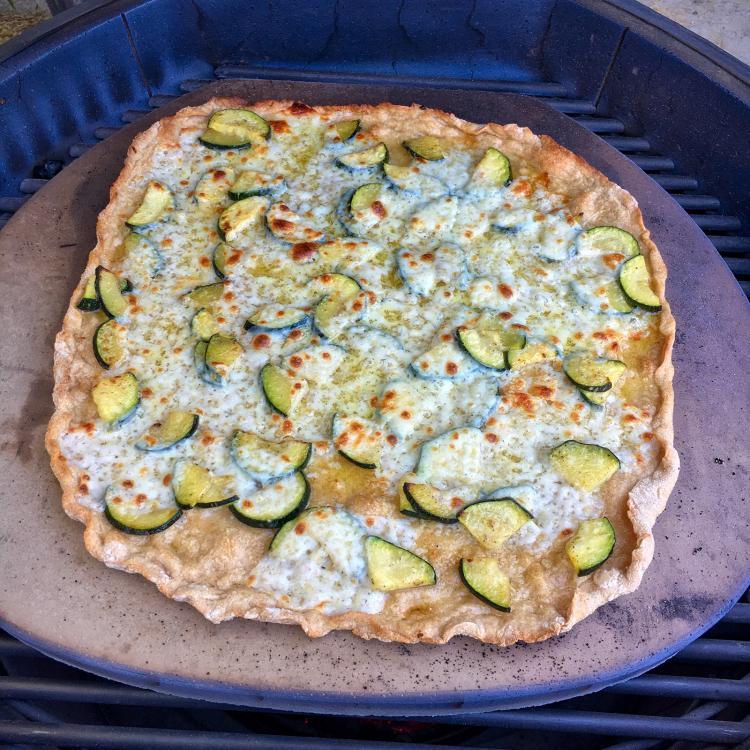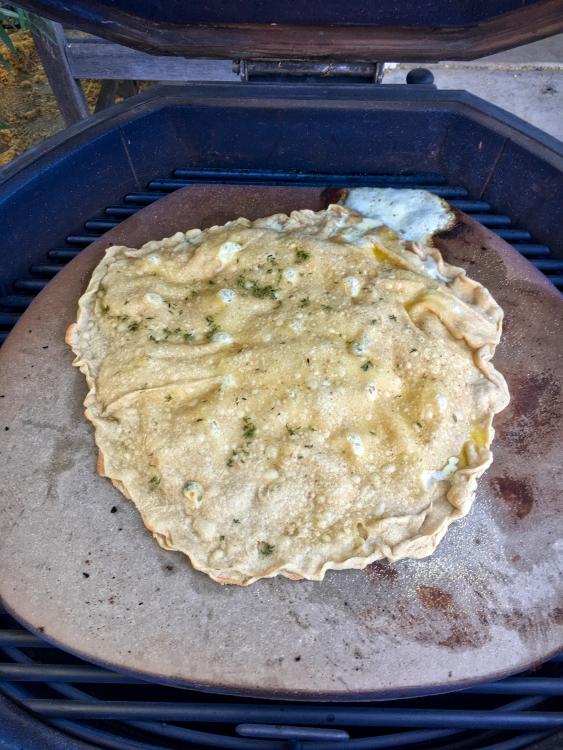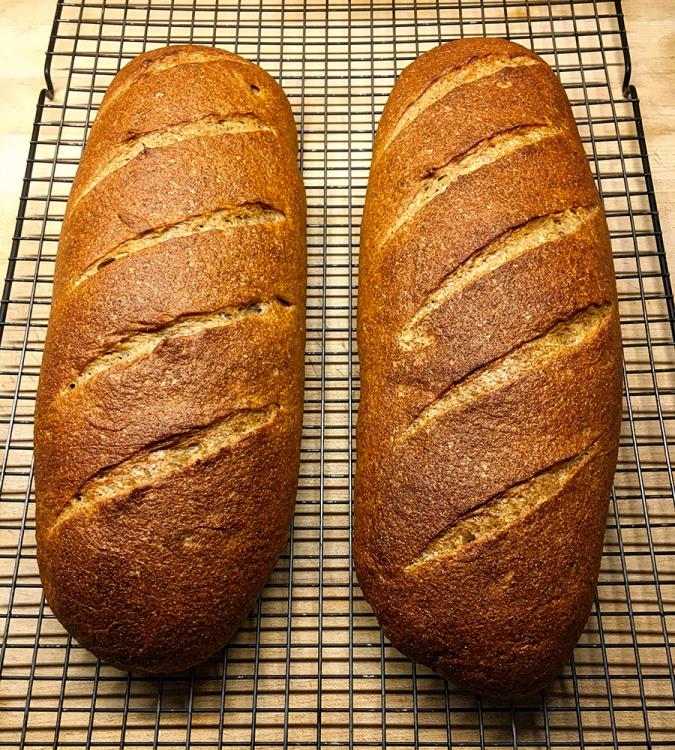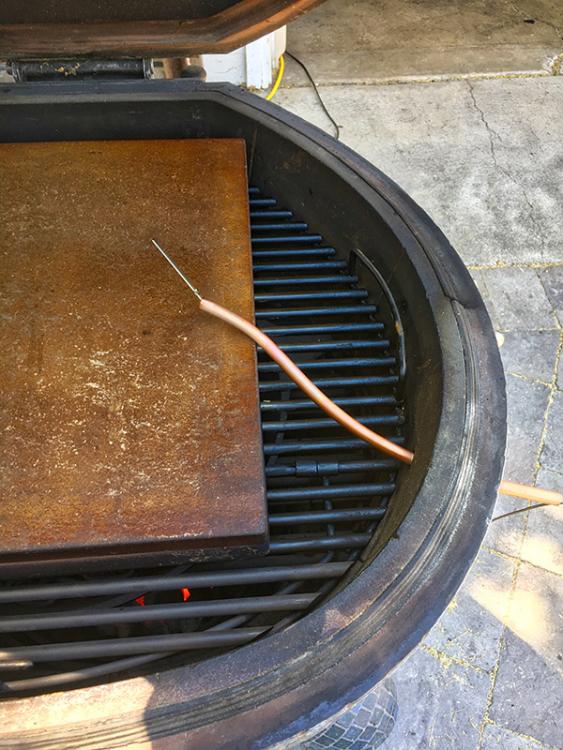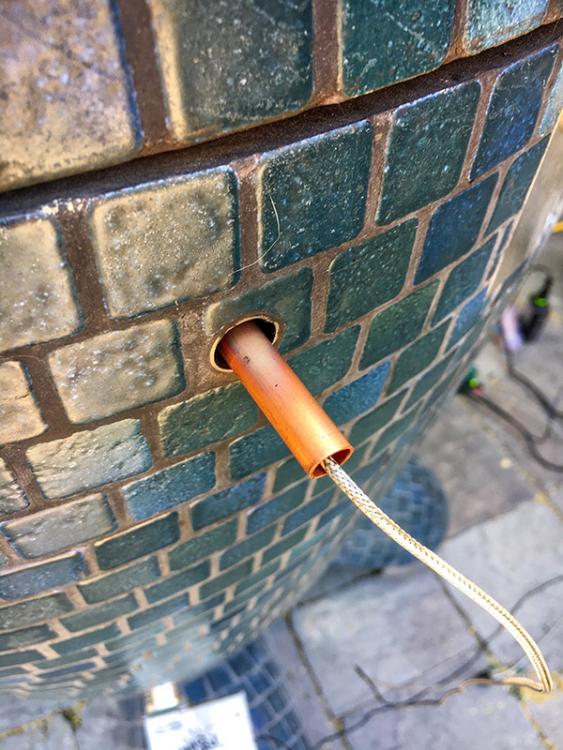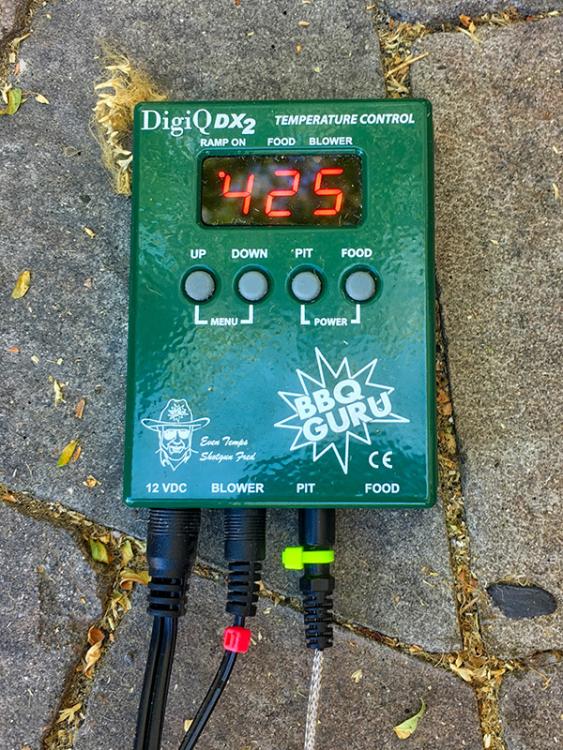-
Posts
1,739 -
Joined
-
Last visited
-
Days Won
53
Content Type
Profiles
Forums
Events
Everything posted by Syzygies
-
I have perhaps eight in two kitchens, and I always choose best fit. I do like the 4 qt as a good starter.
-
Are the aluminum foil ear muffs so the United States CIA can't hear their thoughts about being roasted?
-
Wine? That's interesting. I've used distilled water before. I've kept some batches and discarded some batches where there's a bit of mold. On one hand I don't believe there's a health risk. I can imagine I can taste the difference, but this could be psychological. What I certainly would bet a massive sum on is this: By the time one sees a bit of visible mold on top, there are mold spores that would show up under a microscope, throughout the mixture.
-
I love fermenting hot sauce; I've been doing it for years. I do struggle with the ideal technique. You don't get mold, exposing the jar contents to air filtered through cheesecloth? I've always used some sort of one-way fermentation valve, like making beer. Now I have an argon tank (for saving part bottles of wine), I'm curious if a layer of argon is as easy/effective as those who use a layer of oil.
-
-
"Cracking" grains is a separate problem; one can buy dedicated devices. Or improvise, e.g. an industrial blender or a Thai mortar and pestle. I like to get the grain size down on something like corn, whatever they say. Or, were I to dare using just the KoMo, I'd do two passes, starting very coarse. My first grain mill was completely manual. Enough flour for pasta required twenty minutes and a shower. I keep it for exactly problems like turning corn into polenta. A related problem: If one cooks with turmeric, there are actually several varieties available dried e.g. at Kalustyan's. North India favors one, the south favors another. There is a spectacular difference grinding turmeric in a spice grinder, even to save months at a time. However, one needs to smash the turmeric down to a manageable size or it destroys the grinder. I use a mortar and pestle (and find pieces 30 feet away).
-
I've had a burger every day since. I just ruined another dish I used to be able to eat out. "Chopped" is a misnomer. At first I'd slice as far as I could, then some final mincing with a chopping motion. I've come to think of even that as mashing the meat. After slicing along all three axis, one can wad together the meat and slice another pass or two, as if slicing salumi. No thwacking the knife on the board, all careful drawing the knife past the meat. It is worth a try. Nevertheless, one of my favorite scenes from "Being John Malkovitch" is the documentary clip where Sean Penn struggles with whether he should follow John into puppetry. Being John Malkovich (10/11) Movie CLIP - John Malkovich Becomes a Puppeteer
-
I've been aware most of my life of the idea that the best "ground" meat is hand chopped, and I classified this as a bit over the top. While I'm no stranger to "over the top" (we grind our own flour, well worth it), I'd been blocking out this idea out of some misguided sense of self preservation. Nevertheless, I do have some amazing (Shapton Glass) sharpening stones for my knives. On Sunday, I bought a 3 1/2 rolled beef roast from one of my favorite butchers. A non-standard name, but the end they cut me was from near where rib eye steaks come from. I cleaned it up completely, removing all fat that wasn't marbling, saving 2 1/2 lbs of "steaks". These I cooked sous vide, then finished over coffee charcoal from Dennis, then sliced against the grain keeping the four distinct cuts in separate piles. It was a contender for the best steak of my life. Aside from the discarded fat and tissue, I salvaged bits of meat to make one hand chopped burger. It too was amazing. Remember that one simply needs a burger to hold together as it cooks; the juices congeal, so this takes less than one would think. In comparison, any grinder (even working with partially frozen chunks and a prechilled grinder) makes a massacre of the meat. Hand chopping has a lightness impossible to realize with any grinder. My protocol, moving forward, will be to plan for burgers and steaks, from one purchase of a hunk of beef. We were at a ranch party near Mariposa, CA two weeks ago where they served rib eye steaks to 80 people. How much reinforcement does it take for the idea to stick that ribeye steak is two cuts, and one is actually spectacularly better than the other? This was a big enough pile of meat served for anyone who wanted to get this idea straight. The dream scenario would be to rob this cut for steak night, and hand cut the rest into great burgers.
-
About 110,000. My mechanic is awesome, he's hoping for 200,000 despite it being German, but I don't drive that much.
-
-
Looks great. Here's a plug for Mastering the Art of Japanese Home Cooking by Masaharu Morimoto. For the most part easy authentic, with noted improvisations one can use as models. His teriyaki sauce is good bang-for-buck to make fresh. One could swap in a more interesting sugar, or add homemade Sicilian tomato paste, or a bit of good fish sauce, to vary the flavor. For chicken teriyaki, he fries the chicken bits golden, adds bits of sauce along with a bit of cornstarch/water slurry, in a few stages. I'm finding this sort of thing a very quick dinner, working alone away at my Manhattan apartment.
-

Is a Komodo Kamado Enough for All Your Grilling Needs?
Syzygies replied to tekobo's topic in KK Pre-Sales Questions
Do explore what charcoals you can find. If Relae in Copenhagen can taste the different sources for water they use in stock, you'll certainly distinguish between each charcoal source. Do you happen to be rich? Find some Japanese bincho. There are two poles to charcoal handling with a KK. At one extreme, the fire burns like a fuse. This is your only option for a low and slow, hence the importance of your charcoal choice. At the other extreme, you uniformly burn down all of your coals, in the process thoroughly heat-soaking the KK. The KK is in a different league here from other ceramic cookers. I thought I was already an expert, but the feel was akin to landing a jet after practicing on a prop plane. The KK is very well insulated, with considerable thermal mass. You could probably remove the charcoal fire before roasting, and just coast on the radiant heat in the KK walls, if you wanted to run a bizarre experiment. Many of us are hooked on leaning that way for our hotter cooks. There are many advantages; one is the cleaner taste from fully developed coals, akin to the separate fire box of every dream rig if space is not a constraint.- 156 replies
-
- 1
-

-
- 19 tall
- argentinian grill
-
(and 1 more)
Tagged with:
-

Is a Komodo Kamado Enough for All Your Grilling Needs?
Syzygies replied to tekobo's topic in KK Pre-Sales Questions
I love Argentinian grilling. I used to frequent a Kismet, Fire Island beach house where three Argentinians showed up one weekend to grill. They had bought the meat at an Argentinian butcher (different cuts). They were throwing elbows like an aggressive masseuse, spitting and prodding, very hands on the whole cook. The results were fantastic.- 156 replies
-
- 1
-

-
- 19 tall
- argentinian grill
-
(and 1 more)
Tagged with:
-

Is a Komodo Kamado Enough for All Your Grilling Needs?
Syzygies replied to tekobo's topic in KK Pre-Sales Questions
Is a Komodo Kamado Enough for All Your Grilling Needs? For any cooker, there's going to be what you wanted to do before adapting to the cooker, and what you find you can do after adapting to the cooker. The KK opens up a far wider world than I thought possible, though I can't match absolutely every technique I had learned before. For us, traditional deliberately smoked low and slow barbecue is always a joy, but has become less and less important over time. We do regularly cook brisket or pulled pork for very large groups in a 23" KK. Brisket is dead simple with a KK, but the same quality is out of reach with more primitive equipment. In place of low and slow, the KK has become our outdoor oven. (We love fire and don't love air conditioning, so phasing out the indoor oven in summer is a lifestyle choice.) Bread, pizza, meat roasts, even dessert with good charcoal control. Here, any charcoal short of the KK extruded coconut lump will impart some smoke, that some people will pick up and others won't. With no money constraints or storage constraints, one should consider using extruded coconut lump whenever this could possibly be an issue. Or the KK coffee charcoal, if smoke is ok but has to be that good in quality. (In other words, Dennis is on this.) The KK is a dream for paella. One can close the lid (I sawed the handles off my biggest pan for this), or not. Grilling is like painting. One could happily spend one's life as an oil painter (or only grilling with a KK), but one won't produce watercolors this way. Grilling is also the biggest space hog, and the primary motivation for the largest cookers that Dennis sells. For me, chicken is the most versatile grilling meat, that displays myriad responses to myriad techniques. A couple of decades ago, I nailed a style of rotisserie chicken on a gas grill (like the best you'd expect from a shop that specialized in this), with vivid memories of entire parties rushing the serving table. My rotisserie experiments with the KK never matched this style, for reasons unknown, and I stopped even trying, in favor of direct high heat roasting after a light brine. I also have fond memories of grilled roadside chicken in Thailand, which I came closest to reproducing on 2' x 8' rental grills for a wedding party, constantly tending chicken parts a few inches off nice coals. I can't reproduce this with a KK. Honestly, I've never seen someone nail this style on a Weber either; the coal quality I'm imagining won't last long enough in a Weber, and Weber chicken tends to have the kerosene taste of burnt skin fat. There's something about a uniform, essentially infinitely wide but close and shallow layer of good mature coals, for grilling as people have done for a million years. The KK simply doesn't have this geometry, nor does a Weber. Our meat grilling (pork, beef, lamb, goat) has evolved as we've adapted to sous vide. We're simply very busy, and very fussy about consistent results. The very idea that grilled meat is better on the bone with visible fat strips, shaped like a steak, is an idea that predates and isn't adapted to sous vide. One wants to sous vide a hunk of meat (e.g. pork "sirloin") that can be sliced and eaten in its entirety, then finish it a few minutes over great charcoal. I use KK coffee charcoal, miserly amounts in a basket insert: Mini basket for coffee lump charcoal The sous vide step not only nails doneness, it tenderizes over several hours the more flavorful cuts that can be tougher if cooked traditionally. In summary, I don't trust anyone who disparages a Weber. If one has any talent for grilling, a Weber is a great instrument. However, a KK is far more versatile. How would I quantify this? They're both fairly priced. Does a KK do everything? No. Can I give up what it won't do? Yes, a KK opens up an enormously wider range of possibilities than it gives up.- 156 replies
-
- 2
-

-

-
- 19 tall
- argentinian grill
-
(and 1 more)
Tagged with:
-
I came up with the smoke pot. I've been meaning to try the cold smoker, I just haven't. The cold smoker is a sure thing. There's an art to coaxing the right amount of smoke from the smoke pot. It appeals to those who find open smoldering wood unacceptably smoky, but some people have trouble getting the smoke pot going. Best practice gets a small hot fire under where the pot goes. When I've added a smoke pot after the fire was already stable, I sometimes preheat it, e.g. in a small Weber. The cold smoker uses the same port as a BBQ Guru would, and I'm hooked on the Guru. However, one can adjust the steady flow of air provided by the smoker, and (I'm told) control your fire quite accurately this way. The oxygen supply is consistent, and the heat produced by your fire is pure physics based on available fuel (plenty) and oxygen (limited). Still, one has to be around. The KK needs less heat production after it stabilizes, which takes quite a while. I set my Guru and disappear. (In a dream world a BBQ Guru-like controller adjusts the cold smoker airflow. No one's built that yet. It isn't exactly a PID controller, because the airflow is continuous, not on/off. This should make it an easy Arduino project (for example) as one is simply watching and correcting the rate of flow.)
-
I blew it. The quintessential eclipse photo would be "camera obscura", using the KK TelTru pin hole as a lens. Oops. Instead I drilled a pin hole in our rear shed. Mostly cloudy. Here's the best picture of our eclipse at its peak.
-
-
First bread on the Dennis baking stone, best bread of summer. Multiple lessons. We grind our own flour using a Wolfgang Mock grain mill, sieved through lab grade test sieves that fit nicely into a Vollrath 8 quart bowl: Gilson 12in Round Test Sieve #35 (72% extraction) Gilson 12in Round Test Sieve #25 (93% extraction) Vollrath 69080 Wear-Ever S/S 8 Quart Mixing Bowl This was using the #35, for a lower extraction flour. We also bought fresh ascorbic acid, 40 ppm to combat "green flour" flying saucers. Also (Homer Simpson "Doh!" time), I ran the BBQ Guru pit probe through the dome hole meant for the mechanical thermometer. No need for further protection, and lock-solid 450 F preheat. The Dennis (KK) baking stone is bigger and thicker than what I was using. Very stable, no burnt bottom crust, and the loaves could be longer and further away, for no "Siamese twin" scars where they grew into each other. It has passed all tests and is now my default stone.
-
Wow.
-
Sunday is often pizza night. Another chance to try the Dennis stone. Dennis understands the thermodynamics cold, but so do others, such as Fibrament-D. I would have thought this would be like alkaline batteries, the chemistry is settled science, there can be no difference between good brands. But no, there's the issue of "generosity", this stone is shaped for the KK, as wide as can be without restricting airflow, and as thick as can be with a reasonable preheat time. Baking steels are a different animal, and while they're awesome for, say, burgers, fire control can be tricky for getting them hot enough without scorching pizza. This stone, on the other hand, was falling off a log easy to get the pizza to come out great. I can't wait to try bread.
-
I like using an inexpensive paella pan as reusable foil. (I took the hardest intro physics sequence for my science distribution requirement, a year late. I actually called the professor on a Sunday night because I hadn't begun studying for Monday's exam. Of course he refused an extension. I realized this was multivariable calculus with funny names for things, and got the third highest score in the class. Next exam, I started again the night before, but I flunked. I'd never actually seen differential equations before, and this was too short notice.)
-
-
Huh. An artist worries about "thick over thin" with oil paints, so they don't look like a yahoo after they're dead, with their paintings all cracked in museums. I do believe they're still having fun. When any of us brings a tray of ribs to the cooker, it's completely instinctive to consider: If I miss the lip of the cooker low, I'll spill my ribs onto the ground. If I miss the lip of the cooker high, I'll be fine. I do believe they're still having fun. When Dennis worries about heat transfer coefficients for his pizza stones, I know he's having fun. This isn't about having fun or not having fun, it's about the various realms in which each of us daydream. We're all having fun.
-
-
So I've been unduly cautious about testing the upper range (475 F) of my DigiQ DX2 BBQ Guru controller. Is my fan powerful enough? Will the probes survive? However, for consistent results baking sourdough bread, I need all the precision I can get. (Today's version of my evolving recipe is attached.) On the phone some time ago with BBQ Guru, they suggested protecting the probe as best I could. I picked up this nice piece of bendable copper in the plumbing section of Lowes. The trick is to bend it enough to clear obstacles, but not so much that the probe itself won't slide through. Easy to do by hand. One opens the top damper wider than for a low & slow, but otherwise my "medium" Pit Viper fan had no trouble reaching cruising altitude, and locking on to 425 F. (My dome reads 450 F, which is where I like to be, modulo concerns that my stone gets too hot, risking burning the crust. My goal here is to learn what temperature works, even if I let the stone preheat for hours.) (I'm waiting on both a new gasket system, and a chance to try the Dennis stone.) Sourdough Bread-Recipe.pdf



